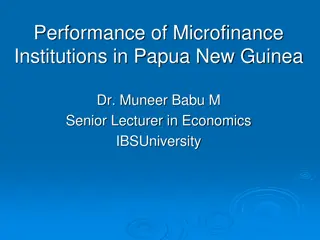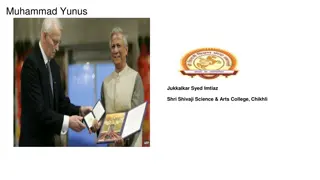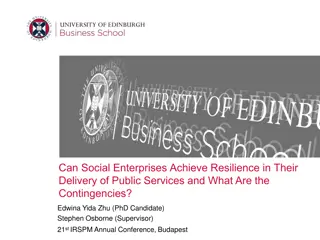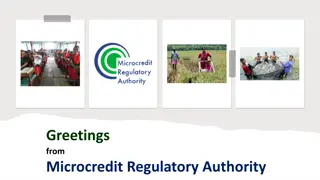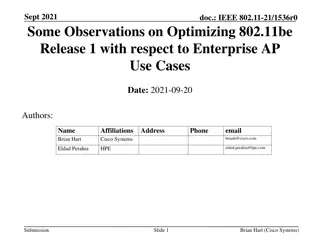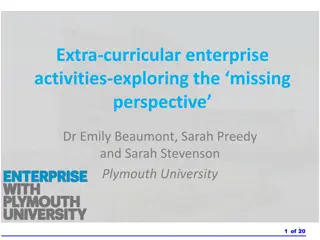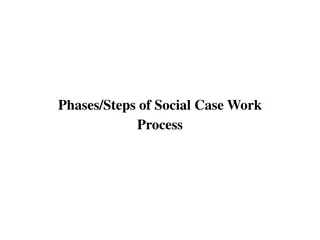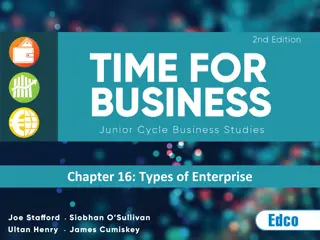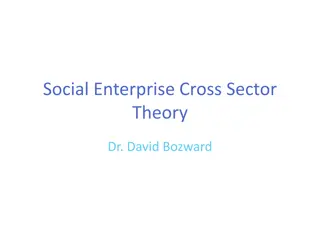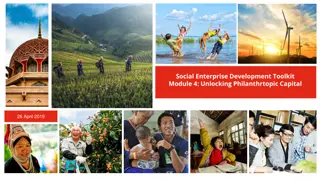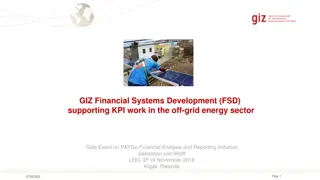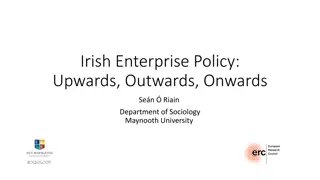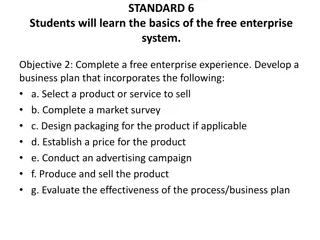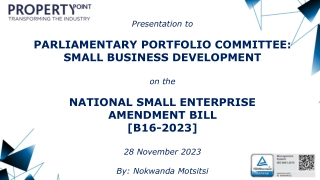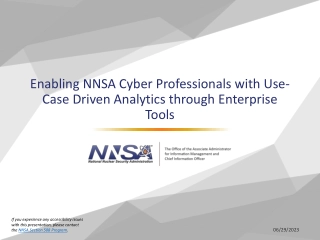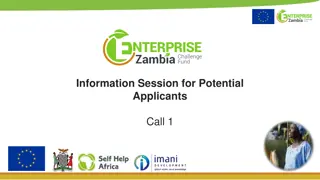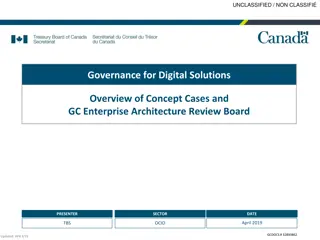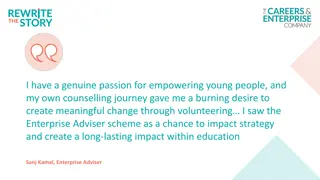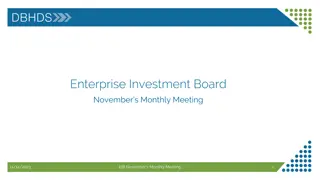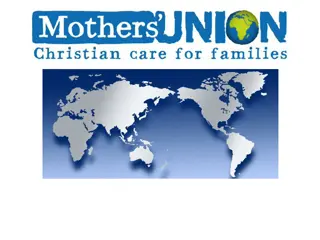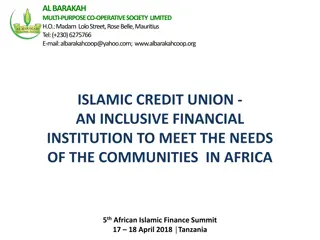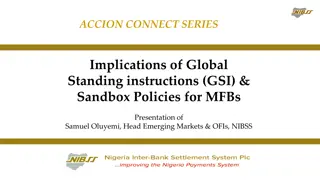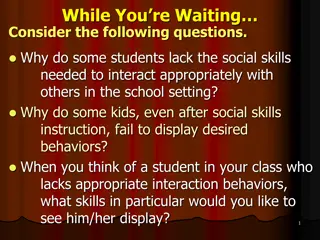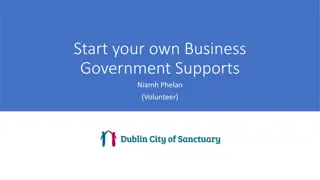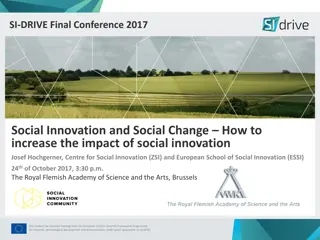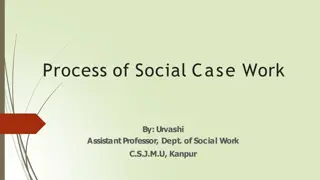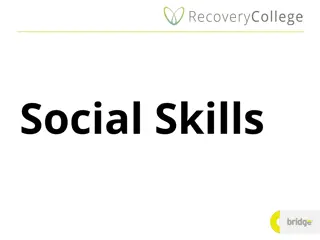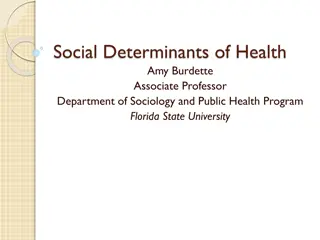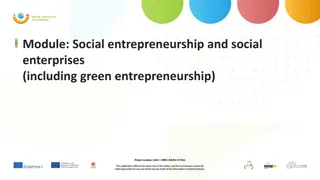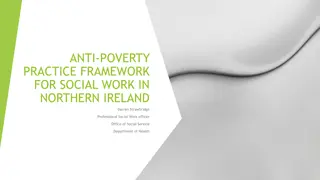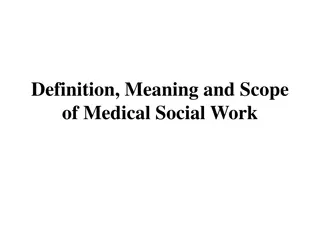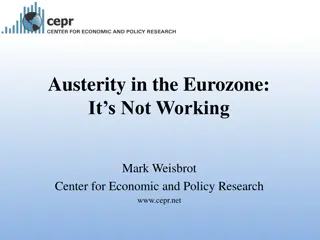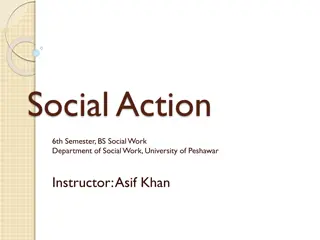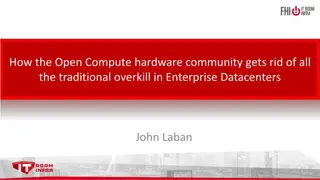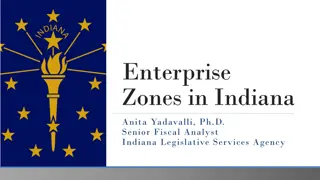Understanding Microfinance: A Case Study of Kiva's Social Enterprise Impact
Microfinance, a banking service offering small loans to individuals and businesses, plays a vital role in empowering communities. Kiva.org, founded in 2005, focuses on building self-sufficiency through small loans and education. Investors support borrowers, emphasizing business success and loan repayment. Despite controversies and risks, the culture of microfinance drives pride, responsibility, and community support. This case study delves into the impact of microfinance on poverty reduction, highlighting Kiva's innovative approach.
Download Presentation

Please find below an Image/Link to download the presentation.
The content on the website is provided AS IS for your information and personal use only. It may not be sold, licensed, or shared on other websites without obtaining consent from the author. Download presentation by click this link. If you encounter any issues during the download, it is possible that the publisher has removed the file from their server.
E N D
Presentation Transcript
KIVA CASE STUDY BUS 506 Funding Social Enterprise Angele Mainhart Marti Mongiello Amy Jackson Mike Gempe Bill Osborne
Microfinance Banking service providing small loans. For individuals and businesses unable to access traditional loans or financial services. Goal: build up the business to become self-sufficient. We envision a world where all people hold the power to create opportunity for themselves and others. Kiva.org
Microfinance Process & Social Benefit Investors make small loans to borrowers to support their business. In many instances, borrowers receive education to help ensure success. Borrowers are expected to pay back loan. Often required to help finance another loan. Borrower is seen as an equal in business. Goal is to make the business self-sufficient. Beyond charity, rethinking how we give Kiva.org
Culture in Microfinance Investors in this culture realize that people want to be able to provide for their families, not just rely on charity. It often is a matter of pride not to fail, to provide well, and not welch on repayment. Complaints of the culture are it has been too narrow and focused on institutional needs or returns. Group payments have been successful as the groups of entrepreneurs work together. Trust is an essential element. Great, international success. Akula, V. (2010). A fistful of rice: My unexpected quest to end poverty through profitability: Harvard Business Press, 16-17. UKEssays. (2015, March 23). Analysing various culture and microfinance practices. Retrieved January 20, 2018, from https://www.ukessays.com/essays/business/analysing-various-culture-and-microfinance- practices-business-essay.php Woller, G. (2002). From market failure to marketing failure: Market orientation as the key to deep outreach in microfinance. Journal of International Development, 14(3), 305-324.
Risks and Controversies In the past we would have called such people loan sharks, but today they re called microfinance providers (Hickel, 2015) Microfinance can be viewed as a controversial topic in that some see it as only an investment strategy - with not enough agreed upon ideas for repayment. Overindebtedness is the top concern identified by two-thirds of practitioners and close observers from 70 countries according to a survey by the Study of Financial Institutions (Zuehlke, 2014). Do these models work in the long-run? Do they actually end up reducing poverty? Hickel, J. (2015, June 10). The microfinance delusion: who really wins? Retrieved January 20, 2018, from https://www.theguardian.com/global-development- professionals-network/2015/jun/10/the-microfinance-delusion-who-really-wins Zuehlke, E. (2014). Microfinance Banana Skins 2014: The CSFI Survey of Microfinance Risk. Retrieved January 24, 2018, from
Description of Kiva Founded by Jessica and Matt Flannery (2005). Based out of San Francisco, California. International lender in more than 80 countries. Purpose to support entrepreneurs living in poverty. Model of Lend vs. Donate. Create business relationship Loans as little as $25 100% goes to funding loans Borrower loan process. Apply, Approval Process, Posted, Funded, Awarded, Repayment It was an early goal to appeal to a mass market audience. Rather than try to attract the most capital as fast as we could, we were interested in engaging average income people to unlock a new type of more connected capital. Thus, from the start, we weren t trying to compete in the commercial investment fund game. Rather, we wanted to get individuals who had never even heard of microfinance into the mix, (Flannery, 2007)
Impact (social-environmental- financial) Crowdfund an average of $2.5M weekly. Lent $1.0B since 2005. Over 28,000 educational loans. Clean energy and water projects. Currently over 100 to choose from. Social Performance through community partnering. Reward and recognize organizations with Badges . Access to products that reduce pollution, provide solar energy, and/or promote recycling. Global reach. Employs over 100 plus many volunteer opportunities. a just, enlightened, healthy and democratic society free from hunger, poverty, environmental degradation and all forms of exploitation based on age, sex, religion and ethnicity. Kiva.org
Due Diligence Due Diligence page easily found on Kiva.org. General. Lenders should learn of risks. Local Partner foreign loans have 4 step process. Direct loans in US are reviewed but riskier. There is an ongoing monitoring process. Controversial requests are addressed. Cockfighting. Strathmore University. Borrower Due Diligence. Repayment schedules. Lender notifications. Kiva has different levels of due diligence to ensure we can reach a broad range of borrowers through our Field Partners. Kiva.org
Pros and Cons CONS PROS Transparency of interest rates paid by borrowers Loans could be risky Potential for Controversial Loans Individual Support vs. Societal Support No profit to lender Only lending partners Scalable in loan size Make money available globally (80+ countries) Promote a cycle of lending Provide other services Insurance Education Financial training If clients are only interested in securing a loan (and not in the range of support services) they need to prove that their business is or will be sustainable. Hamilton, 2011
Recommendation Amy - YES! This is risky for everyone, but if no risks are taken, there is no room for growth. Angele - YES! Part of what makes Kiva worth the risk are the causes behind it. Bill - NO! The middlemen are making a return by charging interest and fees to cover their costs . Marti WITH CAUTION. Their marketing lead-in can be disarming as the imagery initially offers to help in Africa and quickly diverts from there. They have a rather, one-size-fits-all approach. Mike YES! Their due-diligence and vetting of MFIs is strong. As a recipient of the money you also receive other benefits like financial education. Repayment rates in the microfinance industry are much higher than for U.S. domestic loan lending. That s because microfinance institutions are lending to people for whom getting a loan is their only shot at anything Kiva.org
In Conclusion Kiva has grown from the original focus on Africa and Kiva is helping pave the way for impact. There are opportunities in the United States and other Western Countries. We all could have been born into poverty just as simply as we were not. In 2015, 37,000 people in Asheville lived in poverty (Walton, 2016). This is our community right here and now Is Kiva in too many places to really have a powerful, life changing effect? Although the effects of microfinance seem to be over-hyped, the evidence paints a picture of modest success. 2016 saw 40.6 million people in poverty in the US, according to the US Census Bureau. Plenty of US citizens do not have access to traditional loans in the same way that people in developing countries experience. United States Census Bureau 2016




